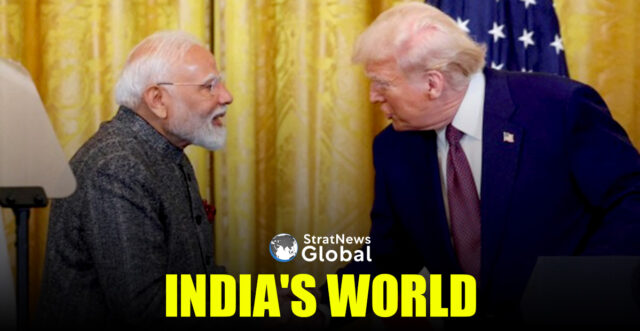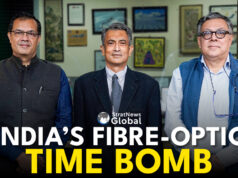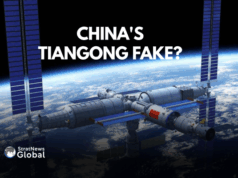In a world increasingly fractured by competing visions of global order, India finds itself cast in a paradoxical role: both a beneficiary of the U.S.-led liberal system and a challenger to its exclusivity.
A new report by the Center for a New American Security (CNAS), a top-tier bipartisan think tank, identifies India as one of six pivotal nations—alongside Brazil, Indonesia, Saudi Arabia, South Africa, and Türkiye—whose choices may shape the future architecture of global governance.
But among this eclectic group, India stands apart, says the report, titled Global Swing States and the New Great Power Competition. It is not merely a swing state, but a self-proclaimed emerging great power that refuses to be clubbed into any singular geopolitical camp.
India’s strategic ambiguity—long seen as a vestige of nonalignment—is now being recast as pragmatic multi-alignment. As the CNAS report notes, India engages robustly with both Washington and Moscow, shares deep economic ties with Beijing even amid a tense border standoff, and actively pushes for institutional reform at the UN and other bodies. The contradiction is real: India abstains on UN resolutions condemning Russia’s war in Ukraine while simultaneously expanding military exercises and technology cooperation with the United States.
This balancing act is not confusion, it is part of a plan. India views the current rules-based international order as simultaneously advantageous and exclusionary. While it has reaped economic gains from globalisation and has become the largest recipient of U.S. FDI in South Asia, India also resents its limited voice in legacy institutions like the UN Security Council, where it remains a perennial outsider. Hence, New Delhi’s parallel engagement with forums like BRICS, the Shanghai Cooperation Organization, and mini-lateral platforms like I2U2.
The report underscores five key pillars of the global order: territorial integrity, open trade, financial stability, nuclear non-proliferation, and human rights. India’s stance on each reveals its uniquely hybrid status:
- Territorial Order: India is both a champion and a sceptic. It has abided by international arbitration in its maritime boundary dispute with Bangladesh—an act of rare diplomatic maturity in South Asia—but refuses to condemn Russia’s invasion of Ukraine, wary of damaging its long-standing defence relationship with Moscow. Its sharpest territorial anxieties lie not in Europe, but on its borders with China and Pakistan.
- Trade and Finance: India is moving away from global trade liberalisation toward strategic autonomy. It walked away from the China-dominated RCEP and has embraced industrial policy at home. Yet it also joined U.S.-led technology initiatives and remains a key player in the global digital economy. The CNAS report rightly notes that India seeks “to transform elements of the current international order” rather than dismantle it.
- Non-proliferation and Human Rights: India’s nuclear status lies outside the NPT regime, but its behaviour has been largely responsible. It shares the U.S. concern about proliferation to rogue actors like Pakistan and North Korea. On human rights, however, India bristles at Western criticism—seeing it as selective and hypocritical—while promoting its own version of democratic pluralism abroad.
More importantly, India is now being courted as a partner in constructing a counterweight to China. The U.S. sees India as the lynchpin of its Indo-Pacific strategy, a co-founder of the Quad, and a tech partner in critical and emerging technologies (via the iCET framework). But the report reminds us that these ties remain transactional. India’s abstentions on Ukraine and continued energy trade with Russia show that it will not be a camp follower. As Prime Minister Narendra Modi has repeatedly said, India will not be pressured into choosing sides.
This independent streak could be an asset or a liability, depending on Washington’s long-term vision. The CNAS authors recommend deeper engagement, academic partnerships, and greater congressional familiarity with Indian politics and economy. But such efforts will succeed only if they respect India’s strategic culture—deeply rooted in civilisational pride, realpolitik, and a desire to shape, not merely follow, the global order.
India today is too big, too confident, and too globally entangled to be considered a mere “swing state.” It is the fulcrum on which the balance of tomorrow’s multipolar order may rest.
The challenge for the U.S. and its allies is to recognise that India’s alignment will be issue-based, not bloc-based—and that this calibrated autonomy might be the most stable foundation for future cooperation.
In a career spanning three decades and counting, Ramananda (Ram to his friends) has been the foreign editor of The Telegraph, Outlook Magazine and the New Indian Express. He helped set up rediff.com’s editorial operations in San Jose and New York, helmed sify.com, and was the founder editor of India.com.
His work has featured in national and international publications like the Al Jazeera Centre for Studies, Global Times and Ashahi Shimbun. But his one constant over all these years, he says, has been the attempt to understand rising India’s place in the world.
He can rustle up a mean salad, his oil-less pepper chicken is to die for, and all it takes is some beer and rhythm and blues to rock his soul.
Talk to him about foreign and strategic affairs, media, South Asia, China, and of course India.





